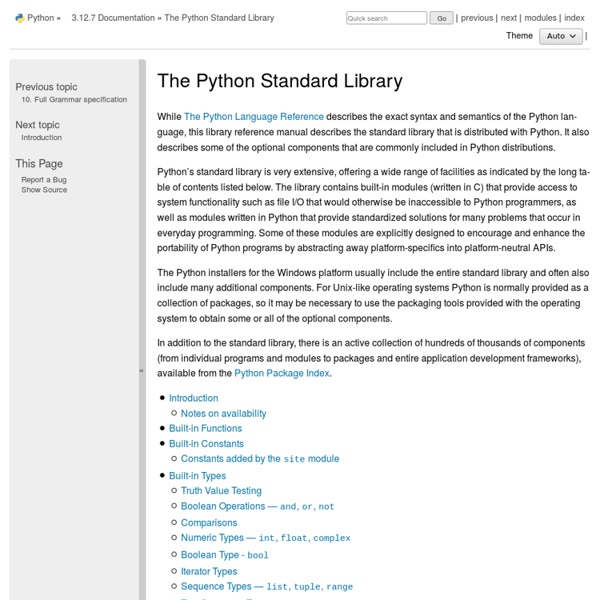Python (langage)
Il est également apprécié par certains pédagogues qui y trouvent un langage où la syntaxe, clairement séparée des mécanismes de bas niveau, permet une initiation aisée aux concepts de base de la programmation[7]. Guido van Rossum, créateur de Python, à la OSCON 2006. En 1989, profitant d’une semaine de vacances durant les fêtes de Noël, il utilise son ordinateur personnel[9] pour écrire la première version du langage. Fan de la série télévisée Monty Python's Flying Circus, il décide de baptiser ce projet Python[10].
Avec Verona, Microsoft sécurise la programmation à la sauce Rust
Bientôt open source, Project Verona adopte une approche différente de la propriété des objets et de la concurrence qui permet de renforcer la sécurité de la gestion de la mémoire. Microsoft tente par la même occasion de travailler sur le langage Rust, qui séduit de plus en plus de développeurs. Microsoft a constaté que 70 % des vulnérabilités de sécurité qu’elle devait traiter étaient liées à des problèmes de sécurité de la mémoire. Pour faciliter l'écriture d'un code plus sûr, l’éditeur a développé un langage pour la programmation d'infrastructures sécurisées.
9.4. decimal — Arithmétique décimale en virgule fixe et flottante — Documentation Python 3.6.14
Source code: Lib/decimal.py The decimal module provides support for fast correctly-rounded decimal floating point arithmetic. It offers several advantages over the float datatype: Decimal “is based on a floating-point model which was designed with people in mind, and necessarily has a paramount guiding principle – computers must provide an arithmetic that works in the same way as the arithmetic that people learn at school.” – excerpt from the decimal arithmetic specification.Decimal numbers can be represented exactly. In contrast, numbers like 1.1 and 2.2 do not have exact representations in binary floating point. End users typically would not expect 1.1 + 2.2 to display as 3.3000000000000003 as it does with binary floating point.The exactness carries over into arithmetic.
imghdr — Determine the type of an image — Python 3.8.0 documentation
Source code: Lib/imghdr.py The imghdr module determines the type of image contained in a file or byte stream. The imghdr module defines the following function: imghdr.what(filename, h=None)
Cobol, 60 ans, toujours aux commandes
Il y a 60 ans naissait un langage orienté entreprise, ouvert et orienté problème, Cobol. Parmi ses concepteurs, les informaticiennes Grace Hopper et Jean Sammet. Aujourd'hui, de nombreux systèmes critiques dans les secteurs de la banque, de la santé et des communications, continuent à s'appuyer sur sa puissance et sa stabilité. C’est en 1959 que Cobol, langage roi des mainframes, est apparu pour la première fois sous son nom le destinant à l’entreprise, Common Business Oriented Language. Plus précisément, Cobol résulte d’un framework de spécification créé en septembre 1959, ainsi que le rappelle Micro Focus, qui reste aujourd'hui l’un des principaux spécialistes avec IBM du langage de programmation.
Ensemble d'aides pour la pratique du langage python avec jupyter
Aide mémoire python Les aides pour Simpy Le fichier jupyter à télécharger ici Graphes : networkx
FrenchLanguage
Links to Python information in French. ISO 639-1 Code: fr français
Porting Python 2 Code to Python 3 — Python 3.7.4 documentation
Once you feel like you know what is different in Python 3 compared to Python 2, it’s time to update your code! You have a choice between two tools in porting your code automatically: Futurize and Modernize. Which tool you choose will depend on how much like Python 3 you want your code to be. Futurize does its best to make Python 3 idioms and practices exist in Python 2, e.g. backporting the bytes type from Python 3 so that you have semantic parity between the major versions of Python. Modernize, on the other hand, is more conservative and targets a Python 2/3 subset of Python, directly relying on six to help provide compatibility. As Python 3 is the future, it might be best to consider Futurize to begin adjusting to any new practices that Python 3 introduces which you are not accustomed to yet.
ipython-books/cookbook-2nd-code: Code of the IPython Cookbook, Second Edition, by Cyrille Rossant, Packt Publishing 2018 [read-only repository]
3. Affichage - Cours de Python
3.1 La fonction print() Dans le chapitre 1, nous avons rencontré la fonction print() qui affiche une chaîne de caractères (le fameux "Hello world!"). En fait, la fonction print() affiche l'argument qu'on lui passe entre parenthèses et un retour à ligne. Ce retour à ligne supplémentaire est ajouté par défaut.
Python in Visual Studio Code – August 2019 Release
Luciana We are pleased to announce that the August 2019 release of the Python Extension for Visual Studio Code is now available. You can download the Python extension from the Marketplace, or install it directly from the extension gallery in Visual Studio Code.
nbviewer
IDLE — Documentation Python 3.7.5
IDLE is Python’s Integrated Development and Learning Environment. Editing and navigation Editor windows IDLE may open editor windows when it starts, depending on settings and how you start IDLE.
Meet the school with no classes, no classrooms and no curriculum
No year groups Students at Agora range from 12 to 18 (though there are no year groups) and each of them is given control over their own educational journey. They are able to explore and learn about topics and things which interest them.



